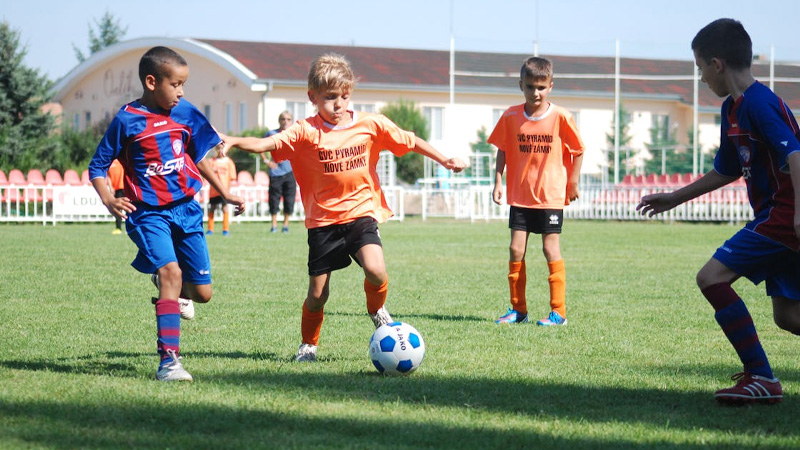Welcome to “Soccer Basic Rules For Kids,” a comprehensive guide designed to introduce young aspiring soccer players to the fundamental rules of the game.
Soccer, also known as football in many parts of the world, is a thrilling sport that promotes teamwork, coordination, and a love for physical activity. Whether your child is just starting out or looking to refine their skills, understanding the basic rules is essential for their development as a player.
In this guide, we will break down the key soccer rules for kids in a simple and engaging manner, ensuring that kids grasp the concepts easily. From the dimensions of the field to the roles of different players, we will cover it all.
We’ll explain the importance of fair play, sportsmanship, and respect for opponents and referees. Additionally, we’ll delve into the rules surrounding scoring goals, fouls, and penalties.
By the end of this guide, your child will have a solid foundation of soccer rules, enabling them to participate confidently and enjoy the beautiful game to the fullest. So, let’s lace up our boots and dive into the exciting world of soccer!
Soccer Basic Rules For Kids
Whether your kid is just starting out or already has a love for the game, it’s important to understand the basic rules. Here are the basic rules of soccer for kids:
Field and Equipment
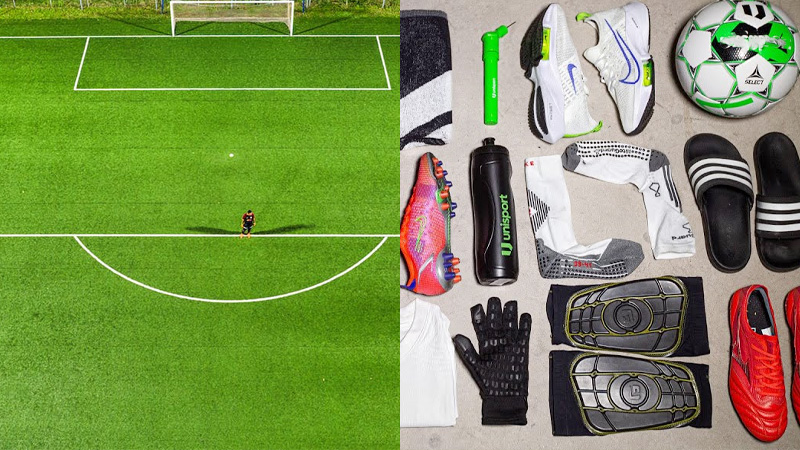
- Soccer is played on a rectangular field with a length of 100-130 yards and a width of 50-100 yards.
- The field is divided into two halves, with a halfway line in the middle.
- Each team has a goal at either end of the field, and the objective is to score by getting the ball into the opponent’s goal.
- Players wear soccer cleats, shin guards, and a jersey with a number on the back.
- The game is played with a round soccer ball.
Teams and Positions
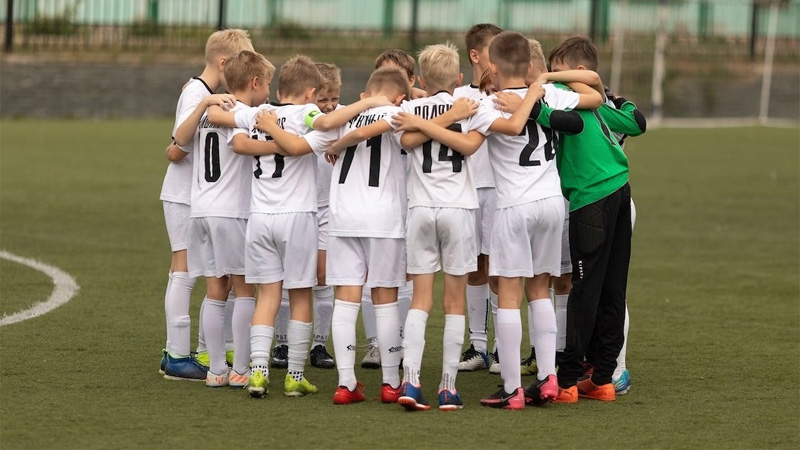
- A soccer team consists of 11 players, including a goalkeeper.
- The players are assigned different positions, such as forwards, midfielders, defenders, and goalkeepers.
- For younger kids, the number of players on the field may be reduced, and positions may be more flexible.
Kick-off
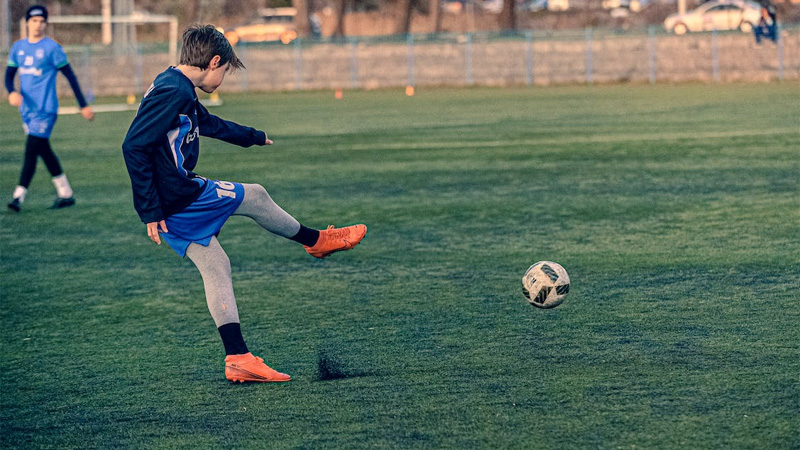
- The game starts with a kick-off at the center of the field.
- The team that wins the coin toss gets to choose which end to attack first.
- The opposing team must be at least 10 yards away from the ball during the kick-off.
Gameplay
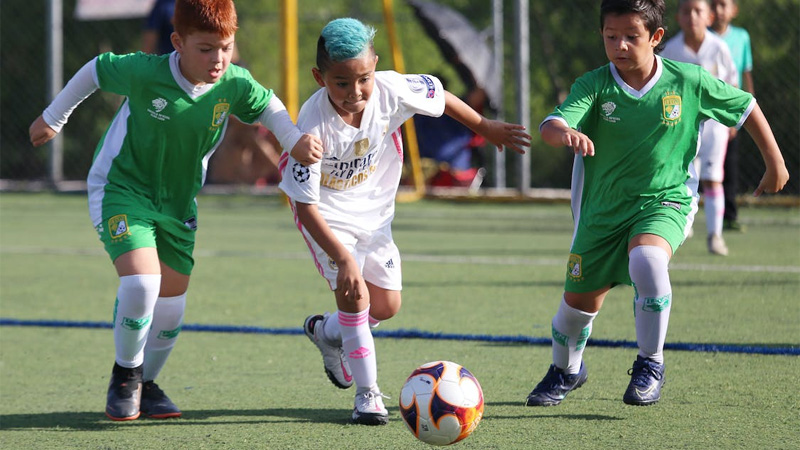
- Players use their feet, head, or any part of their body except their arms and hands to play the ball.
- The objective is to pass the ball, dribble it, and ultimately score goals.
- Players can pass the ball to their teammates, shoot at the goal, or try to steal the ball from the opponents.
- The team that scores the most goals within the allotted time wins the game.
Offside

- Offside is a rule that prevents players from staying in an offside position and gaining an unfair advantage.
- A player is considered offside if they are nearer to the opponent’s goal line than both the ball and the second-to-last defender when the ball is played to them.
Fouls and Penalties
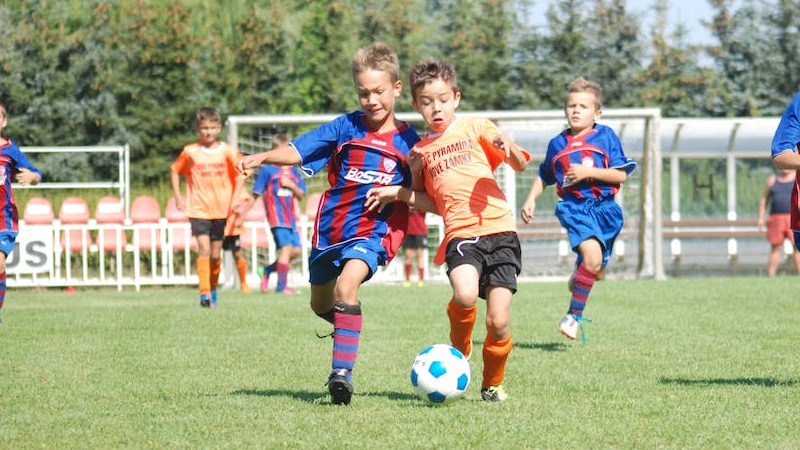
- Certain actions are considered fouls, such as tripping, pushing, or intentionally handling the ball.
- When a foul is committed, the opposing team is awarded a free kick or a penalty kick, depending on the severity of the foul.
- A free kick is taken from the spot where the foul occurred, while a penalty kick is taken from the penalty spot, 12 yards away from the goal.
Throw-ins
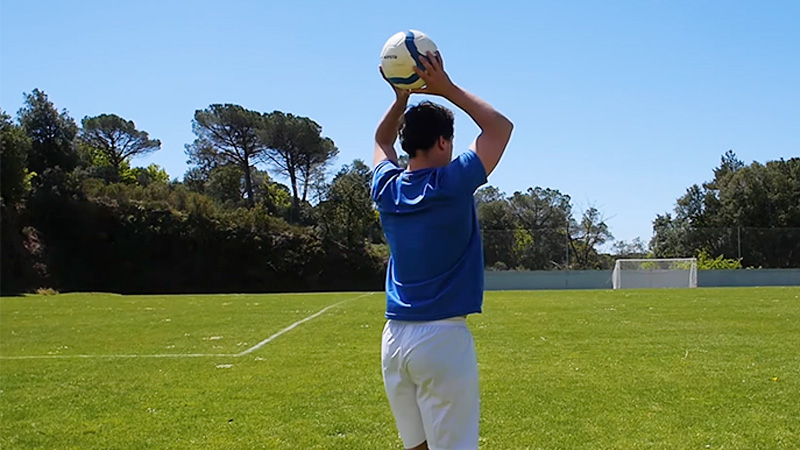
- When the ball goes out of bounds on the sidelines, a throw-in is awarded to the opposing team.
- The player taking the throw-in must have both feet on the ground and throw the ball over their head using both hands.
Goalkeeper Rules
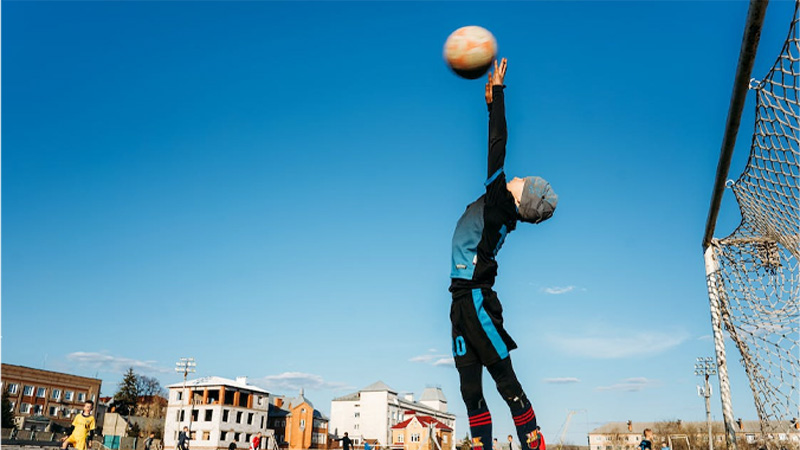
- The goalkeeper is the only player allowed to use their hands and arms within their own penalty area.
- They can catch, throw, or kick the ball to distribute it to their teammates.
- The goalkeeper’s primary role is to prevent the opposing team from scoring goals.
Substitutions
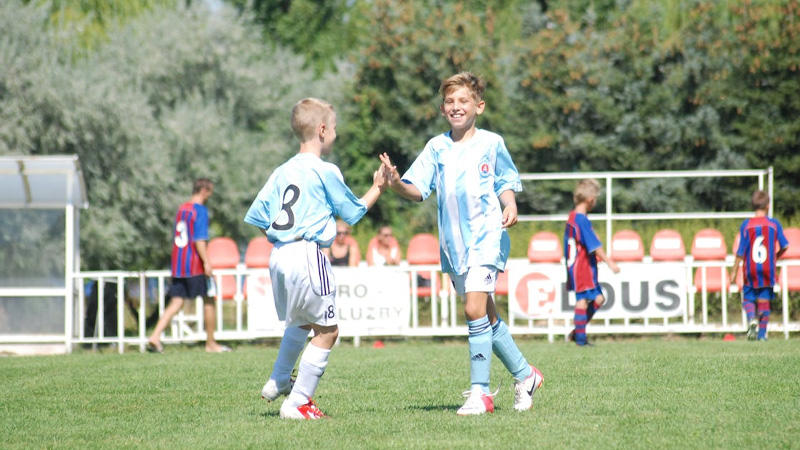
- Teams are allowed to make substitutions during the game to replace tired or injured players.
- Substitutions can be made at any stoppage in play, with the referee’s permission.
Fair Play and Sportsmanship
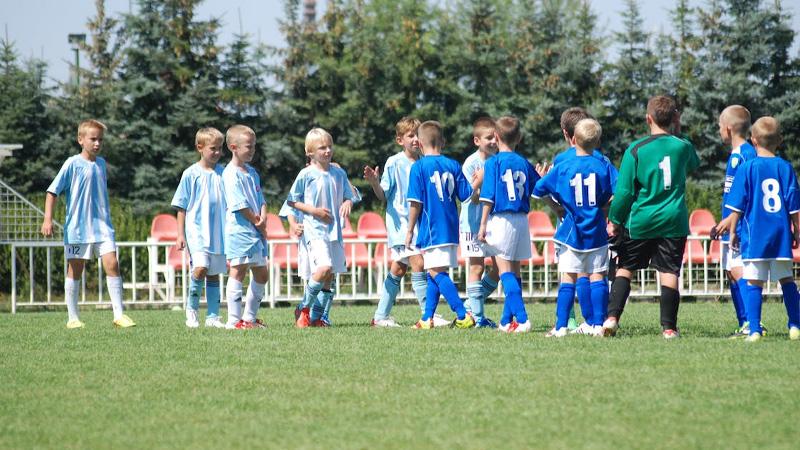
- Soccer promotes fair play and good sportsmanship.
- Players should respect the rules, the referee’s decisions, and their opponents.
- It is important to play the game with integrity and treat all players with respect.
How Do I Teach My Child to Play Soccer?
Teaching your child to play soccer can be a rewarding and enjoyable experience for both of you. Here is a detailed guide to help you get started:
Start with the Basics
Begin by introducing your child to the basic rules and concepts of soccer. Explain the objective of the game, the positions, and the basic rules such as offside, fouls, and throw-ins. Use simple language and examples to make it easier for them to understand.
Develop Their Motor Skills
Soccer requires good coordination, balance, and agility. Help your child develop these skills through various activities such as running, jumping, skipping, and hopping. Encourage them to practice these movements regularly to improve their overall physical abilities.
Teach Them Ball Control
Ball control is a fundamental skill in soccer. Start by teaching your child how to properly kick the ball using the inside of their foot.
Show them how to pass the ball back and forth with you, gradually increasing the distance between you. Practice dribbling by having them maneuver the ball around cones or other obstacles.
Introduce Basic Techniques
Once your child has a good grasp of ball control, introduce them to basic techniques such as shooting, passing, and receiving.
Break down each technique into simple steps and demonstrate them slowly. Encourage your child to practice these techniques repeatedly until they become comfortable with them.
Focus on Teamwork
Soccer is a team sport, so it’s important to teach your child about the value of teamwork. Emphasize the importance of passing, communication, and supporting their teammates. Encourage them to work together with their teammates during practice sessions and games.
Teach Game Awareness
Help your child develop their game awareness by teaching them to scan the field and anticipate the movements of their teammates and opponents. Teach them to look up while dribbling to be aware of their surroundings and make better decisions on the field.
Practice Drills and Small-Sided Games
Incorporate drills and small-sided games into your training sessions. These activities help your child apply their skills in a game-like setting and improve their decision-making abilities. Focus on drills that emphasize specific skills such as shooting, passing, or defending.
Encourage a Love for the Game
Make sure to create a positive and enjoyable environment for your child to learn and play soccer. Encourage their passion for the game by attending professional matches, watching soccer games together, and discussing their favorite players and teams. Celebrate their achievements and provide constructive feedback to help them improve.
Join a Soccer Team or League
Once your child has developed basic skills and an understanding of the game, consider enrolling them in a local soccer team or league.
Playing with other children their age will provide them with valuable game experience and opportunities to further develop their skills.
Support their Progress
As a parent, it’s important to support your child’s progress and growth in soccer. Attend their games and practices, provide positive reinforcement, and offer constructive feedback.
Encourage them to set goals and work towards achieving them, but also remind them that the most important thing is to have fun and enjoy the game.
Remember, every child learns at their own pace, so be patient and supportive throughout the process. With time, practice, and dedication, your child can develop into a skilled soccer player.
FAQs
How many players are on a soccer team for kids?
Typically, a soccer team for kids consists of 11 players, with one player designated as the goalkeeper. However, depending on the age group and league, the number of players on the field may vary.
How long is a soccer game for kids?
The duration of a soccer game for kids varies depending on the age group. Generally, younger children play shorter games, while older kids play longer matches.
In many youth leagues, games for younger age groups may be divided into quarters or halves, with each period lasting around 10-15 minutes.
Are there any rule modifications for kids’ soccer?
In some youth leagues, certain rule modifications may be implemented to accommodate the age and skill level of the players. For example, smaller fields, smaller goals, and reduced team sizes may be used for younger age groups.
Can kids use their hands in soccer?
No, kids (except for the goalkeeper within their penalty area) cannot use their hands or arms to touch the ball during a soccer game. This rule applies to all players, regardless of age.
How is offside determined in kids’ soccer?
Offside in kids’ soccer is determined using the same principles as in adult soccer. When an attacking player is involved in active play and is closer to the opponent’s goal line than both the ball and the second-to-last defender when the ball is played to them, they are considered offside.
Bottom Line
We hope that “Soccer Basic Rules For Kids” has provided a clear understanding of the fundamental rules of soccer. By familiarizing themselves with these rules, young players can enhance their skills, develop a deeper appreciation for the sport, and enjoy playing with their teammates.
Remember, soccer is not just about winning or scoring goals; it’s about teamwork, sportsmanship, and having fun. Encourage your child to embrace these values and to always respect their opponents, coaches, and referees.
As your child continues their soccer journey, they may encounter more advanced rules and strategies. It’s important to support their growth and encourage them to keep learning and improving. Soccer is a game that offers endless opportunities for personal development and enjoyment.
So, grab a ball, head to the field, and let your passion for soccer ignite. With a solid understanding of the basic rules, your child is ready to kickstart their soccer adventure. Good luck, and may their love for the game continue to grow!

